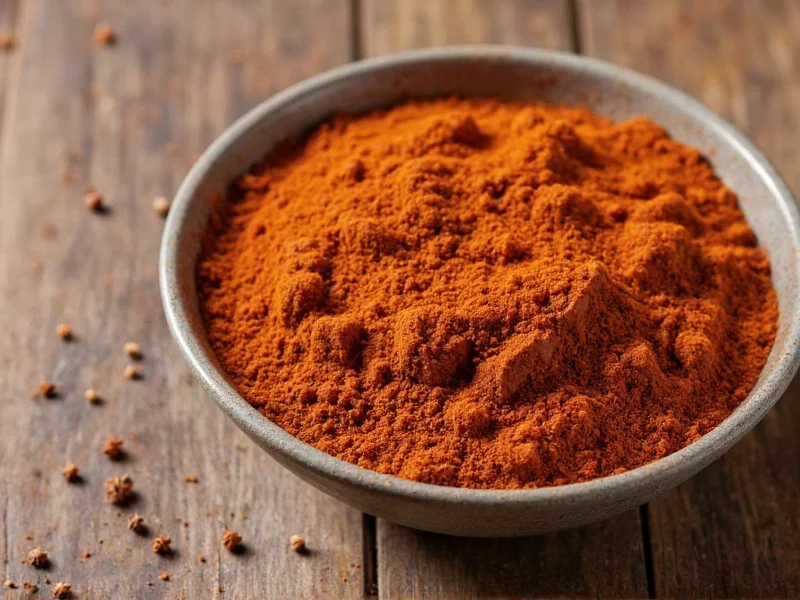The best spices for beef stew are bay leaves, thyme, rosemary, and black pepper as essential foundations, complemented by garlic, onion, and a touch of paprika for depth. For authentic flavor, a combination of these core spices creates the perfect balance of earthy, aromatic notes that enhance the rich beef without overpowering it. This classic spice profile has been perfected through culinary tradition and works reliably for hearty, flavorful beef stew every time.
Creating the perfect beef stew hinges on thoughtful spice selection. While recipes vary across regions and cultures, certain spices consistently deliver the rich, complex flavors that define an exceptional beef stew. Understanding which spices work best—and why—can transform your stew from ordinary to extraordinary.
Essential Spices for Beef Stew
When considering what spices go well with beef stew, focus on those that complement beef's natural richness without overwhelming it. The following spices form the foundation of traditional beef stew seasoning:
Bay Leaves
Bay leaves provide a subtle, woodsy background note that enhances other flavors without dominating. Use 1-2 dried bay leaves per pot, removing them before serving. They're particularly effective at rounding out the overall flavor profile of hearty beef stew seasoning.
Thyme
Fresh or dried thyme adds an earthy, slightly floral note that pairs beautifully with beef. Its delicate flavor withstands long cooking times, making it ideal for how to season beef stew properly. Use about 1 teaspoon dried or 1 tablespoon fresh thyme per pound of beef.
Black Pepper
Freshly cracked black pepper provides necessary heat and complexity. Contrary to popular belief, pepper added early in cooking develops a more rounded flavor than adding it only at the end. This is crucial for achieving balanced flavor profile for beef stew.
Garlic and Onion
While technically aromatics rather than spices, these form the flavor base. Sauté them first to develop sweetness and depth, creating the foundation for your perfect spice blend for beef stew.
Supporting Spices for Depth and Complexity
Once you've mastered the essentials, consider these complementary spices to elevate your traditional spices for beef stew:
Paprika
A teaspoon of sweet paprika adds color and subtle sweetness. For a bolder flavor, try smoked paprika, which contributes a gentle smokiness that complements the beef beautifully in authentic beef stew spice mix recipes.
Worcestershire Sauce
Though not a dry spice, this umami-rich condiment enhances meaty flavors. Just 1-2 tablespoons can deepen the overall flavor profile of your classic beef stew seasoning.
Tomato Paste
Browning tomato paste with your aromatics creates a rich base that helps develop complex flavors throughout the cooking process for essential spices for beef stew.
| Spice | When to Add | Recommended Amount (per 2 lbs beef) | Flavor Contribution |
|---|---|---|---|
| Bay Leaves | Beginning of cooking | 1-2 leaves | Earthy background note |
| Thyme | Beginning of cooking | 1 tsp dried / 1 tbsp fresh | Floral, earthy complexity |
| Black Pepper | Beginning of cooking | 1/2 tsp freshly cracked | Subtle heat, depth |
| Paprika | Middle of cooking | 1 tsp | Rich color, mild sweetness |
| Worcestershire | Middle of cooking | 1-2 tbsp | Umami depth |
When to Add Spices for Optimal Flavor
Timing matters as much as selection when considering when to add spices to beef stew. Hardy herbs like thyme and bay leaves benefit from long cooking times, allowing their flavors to fully integrate. Delicate herbs like parsley should be added at the end to preserve their fresh flavor.
Dry spices generally fall into two categories:
- Early addition: Bay leaves, thyme, rosemary, black pepper (added with aromatics)
- Late addition: Paprika, delicate herbs (added in the last 30 minutes)
Avoiding Common Spice Mistakes
Many home cooks make these errors when creating best herbs for beef stew:
- Over-spicing: Too many competing flavors create confusion rather than complexity. Stick to 3-5 core spices.
- Under-seasoning: Beef stew needs more salt and spices than you might expect due to its volume.
- Adding all spices at once: Different spices release flavors at different rates—timing matters.
- Using old spices: Stale spices lack potency. Replace ground spices every 6-12 months for perfect spice blend for beef stew.
Regional Variations Worth Trying
While the classic French-inspired combination works universally, regional approaches offer interesting alternatives for authentic beef stew spice mix:
- Irish stew: Focuses on simplicity—just black pepper, maybe a hint of thyme
- German variation: Adds a touch of caraway and juniper berries
- American Midwest style: Often includes a bit of celery seed and allspice
- Southwestern twist: Incorporates cumin and a touch of chili powder for essential spices for beef stew with a kick
Creating Your Signature Blend
Once comfortable with the basics of traditional spices for beef stew, experiment with small adjustments:
- Add a pinch of cinnamon for subtle warmth (¼ tsp per pot)
- Try a single clove for aromatic complexity (remove before serving)
- Incorporate a strip of orange zest for brightness
- Use a splash of red wine to enhance spice extraction
Remember that spices continue to develop during storage. A stew often tastes even better the next day as flavors fully integrate—a key consideration for how to season beef stew properly.
Final Thoughts on Beef Stew Seasoning
The best spice for beef stew ultimately depends on your personal taste preferences and cooking style. Start with the classic foundation of bay leaves, thyme, black pepper, and aromatics, then adjust based on your preferences. Proper seasoning transforms simple ingredients into a deeply flavorful, satisfying meal that showcases why beef stew remains a beloved comfort food worldwide.











 浙公网安备
33010002000092号
浙公网安备
33010002000092号 浙B2-20120091-4
浙B2-20120091-4